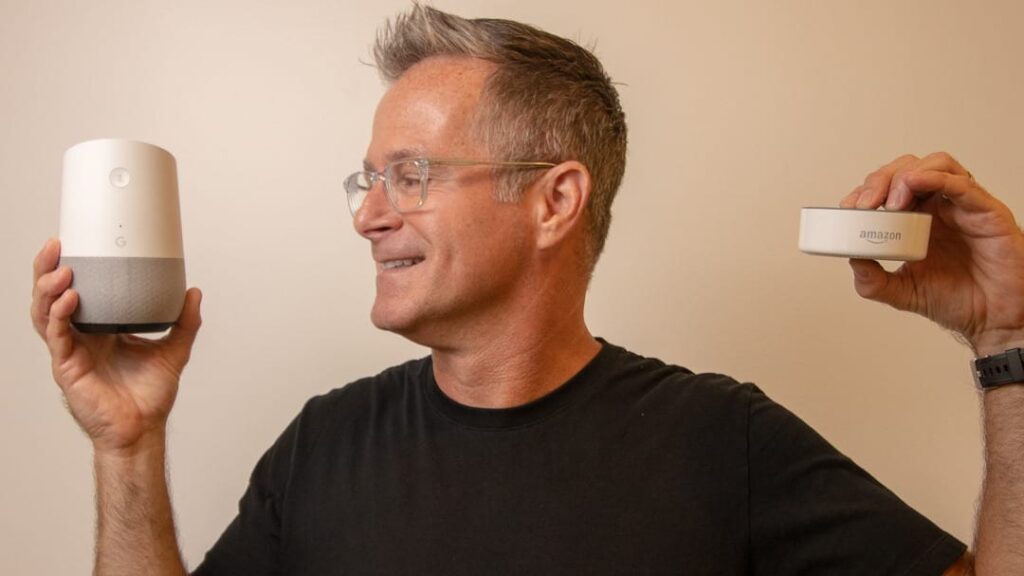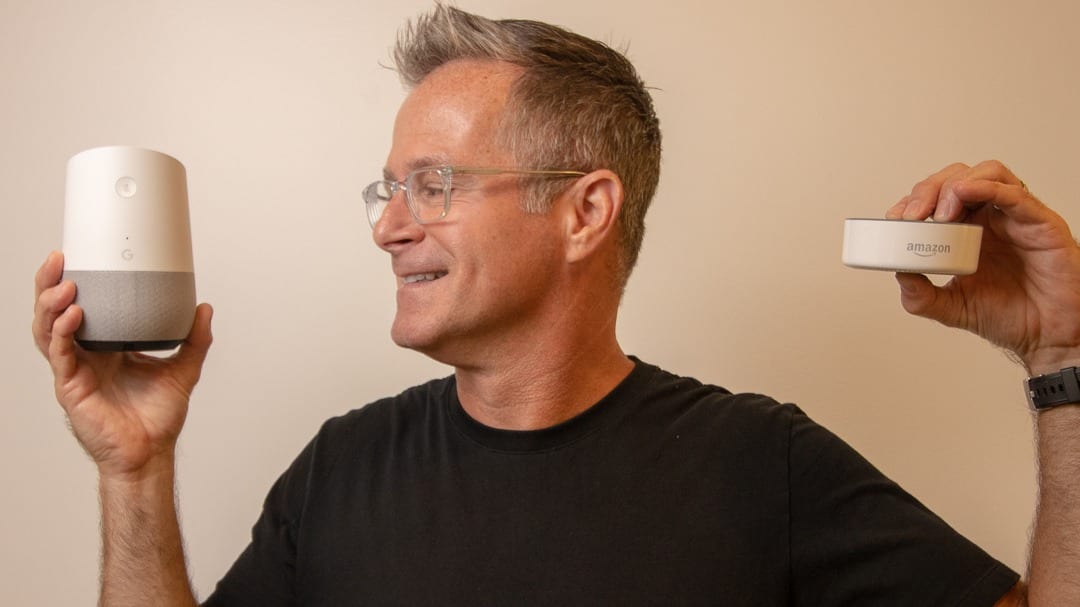
Post from Jim Cusson, President of Theory House
On the technology adoption life cycle, I tend to fall far left on the curve as an Innovator – particularly when it comes to the Internet of Things (IoT). I invested in Nest thermostats when they first hit the market in 2011, and my home is a testing ground for connected light bulbs, locks and various sensors. I also have both Amazon Echo and Google Home smart speakers.
With all the buzz surrounding the disruptive nature of voice-enabled shopping (it is expected to jump to $40 billion annually in 2022 in the United States, from $2 billion today), I decided to shop with my Amazon and Google speakers to see how they performed. Here’s my experience in a head-to-head competition.
If you haven’t voice shopped yet, getting started is pretty simple. For Amazon Echo, Echo Dot, or other Amazon devices, you must be a Prime member with valid 1-Click preferences to shop all of Amazon’s offering. When you shop with Google Home, it uses Google Assistant to interact with Google Express which gives you access to over 50 stores like Walmart, Target and Best Buy. Simply log the Google Home app to add a payment method and delivery address. Once enabled, you’re ready to shop.
To begin shopping for a backyard party I’m hosting I asked Alexa to order paper plates. She replied that based on my browsing history she found Dixie Everyday, 8 ½, 480 count plates for $27.80 and asked if I would like to buy them. I didn’t need that many plates, so I said no. She then offered to send more results to my phone, which I declined. Finally, she offered up Chinet dinner plates 100 count for $13.20 which I accepted. She then replied, “Ok, order placed,” told me the total and informed me of the delivery date. With plates out of the way, I moved onto chips. I told Alexa to add chips and she said, “I’ve added chips to your shopping list.” Wait, shopping list? I didn’t want to build a list, I wanted to keep on shopping. Here’s where the experience falls apart (for now). Each voice order on Amazon can only be a single item (or multiple quantities of a single item). So to shop for my party, I’d have to execute an individual order for each item, or build a shopping list and then move over to the mobile App or Amazon.com web site to execute my order. I didn’t seem to be able to actually voice order my list.
Once I understood how Amazon worked, I moved over to Google. The Google Express integration lets you ask to shop a particular retailer. “Hey Google,” I said, “order paper plates from Target.” She said the first thing she found from Target on Google Express was 54 quantity 8 ½ Up & Up heavy duty white paper plates for $2.99 and asked if I would like them. I said, “yes,” and she added it to my cart. Wait, another cart? I wondered if this experience was going to mirror Amazon. But then she suggested that Target would offer free delivery if I spent $12.01 more and asked if I needed anything else. So I added chips and then paper towels to reach my free shipping threshold. Each time I added an item, Google announced how much more I needed to receive free shipping and asked if I needed anything else. Once I was ready to checkout she repeated my cart contents, announced the total and indicated the delivery date. But then it did something unexpected – Google told me to finish the order I had to follow a notification on my phone. I grabbed my phone and sure enough, there was a notification asking me to confirm my order. I guess this is a safeguard that Google has built in, but I found the step introduced unnecessary friction into what was a pretty good interaction.
Based on my test of one, I give the nod to Google Home as a better voice shopping platform (full disclosure, Google is a client of Theory House). I like the flexibility of shopping a specific retailer, and I found the conversational interaction with Google to feel very natural. The fact that I could build a cart and add all the items I needed was a win over Amazon. My only disappointment was the requirement to confirm the order on my phone. And if you don’t exceed the amount for free delivery, a $4.99 fee could make the service expensive.
So if you’re in a pinch and have to order moderately priced items that can deliver with free shipping, voice shopping is a convenient alternative to traditional retail.
Theory House is an expert retail marketing agency helping the world’s leading retailers and brands imagine what’s next at retail. Learn more at www.theoryhouse.com




